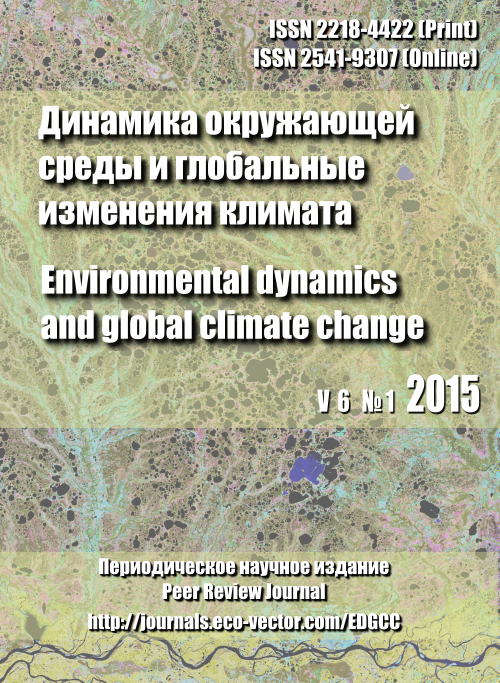Vol 6, No 1 (2015)
- Year: 2015
- Published: 15.06.2015
- Articles: 5
- URL: https://edgccjournal.org/EDGCC/issue/view/379
Articles
Fleshy fungi forays in the vicinities of the YSU Mukhrino field station
Abstract
The article sums up the results of studying the fleshy fungi biota in the vicinities of the Yugra State University Mukhrino Field Station (Khanty-Mansiysk, boreal zone of Western Siberia). Collections were made between 2008-2014 during forays in forest, floodplain and bog ecosystems. A total of approximately 600 specimens were studied using the standard methods and identified based on up-to-date monographs and floras. Dried specimens and metadata are stored in the YSU Fungarium. The species richness of the identified fleshy fungi mycobiota is made up of 324 taxa from 108 genera, 42 families and 10 orders. The majority of species (40%) are mycorrhizal with trees, the rest are saprobic on wood (25%), soil (20%) and other substrates. Fleshy fungi being an important food source, edibility of the finds was analyzed: 23% (71 taxa) are edible, including 30 species which are considered edible and good; 5% are poisonous, including several deadly poisonous species; 14% are edible with caution; information on the rest (57%) is not available in literature. Seven of the discovered species are currently redlisted in the Khanty-Mansi Autonomous Okrug (Yugra); information on the locations and state of populations is provided. The comparison of the list of the discovered taxa with the combined list of taxa from previously published works on Yugra fleshy fungi shows a high degree of novelty: only a third of the species were registered previously, and the rest (198 taxa) are new finds for the territory. The annotated checklist provides information on dates, locations, abundance, trophic groups and edibility of all discovered taxa.
Environmental Dynamics and Global Climate Change. 2015;6(1):3-31
 3-31
3-31


Vozmozhen li znachitel'nyy polozhitel'nyy disbalans krugovorota ugleroda (stok) na territorii Rossii?
Abstract
Отвечая на вопрос д.б.н. проф. А.В. Смагина [2014] «Возможен ли значительный положительный дисбаланс круговорота углерода (сток) на территории России?», поднятого в разделе «Дискуссии» ДОСиГИК, нам хотелось бы поделиться следующими размышлениями, основанными на анализе современной литературы и в более расширенном виде опубликованными в журнале «Наука в России» (2012, № 5, с. 25-32).
Environmental Dynamics and Global Climate Change. 2015;6(1):32-35
 32-35
32-35


 36-38
36-38


 39-41
39-41


A REPLY TO A.V. SMAGIN: III. ON THE ISSUE OF METHANOTROPHIC FILTER AND GAS DISCHARGE INTO THE ATMOSPHERE
Abstract
A.V. Smagin suggested a 50% contribution of CH4 to the gross-production of gaseous carbon in the wetlands. We perform calculations using typical (but not extreme, like A.V. Smagin) parameters, showing that this contribution is lower and is about 6%. Furthermore, methodological errors were identified in "measuring" of significamt emissions (convective discharge) from wetland soils. It is shown that this "emissions" could be an artifact - a result of the impact of samplers or the process of sampling to the surrounding peat. As a result, it is possible to speak only about the fluctuations of methane concentration in the samplers, but not about the phenomenon of gase’s "convective discharge" from the wetland soil. This is just a hypothesis to explain these fluctuations, and this hypothesis is not the best in light of sampling errors (who and how takes samples, where samples are stored and how samples were analyzed).
Environmental Dynamics and Global Climate Change. 2015;6(1):42-54
 42-54
42-54











